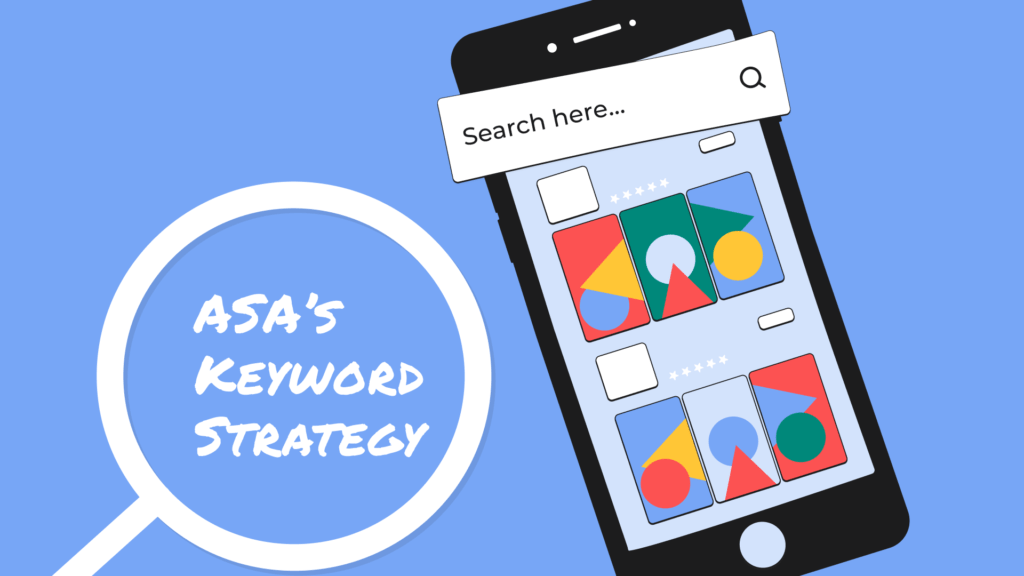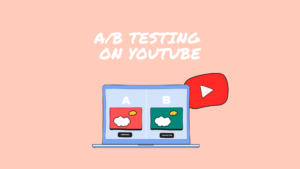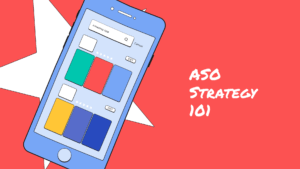If you’ve never worked with ASA or need to brush up on your campaign management skills, I invite you to read my other article Getting started with Apple Search Ads Campaign.
Otherwise, let’s dive right into how I prepare my keyword lists for ASA campaigns.
Keywords search
Building your keywords list means researching the maximum amount of search terms relevant to your application.
You can use the Search Match feature of ASA, which will let the platform suggest keywords that are considered relevant to your app and do the “dirty work” for you. But in my experience, the search match feature isn’t enough, and manual search is essential.
Similarly to the keywords search for your ASO strategy, this keywords search can be done as a team. At this step, you’re brainstorming ideas around crucial features and possible use cases.
The key is to step into the user’s shoes and try to grasp how users would search for an app like yours, what words are people going to use. Once you have the first list of features and content-based keywords, you can enhance it with more general search terms and long-tail keywords.
At this step, I try to have at the very least about 100 keywords. But the more, the better; after all, each ad group of your campaign can contain up to 5000 keywords.
When brainstorming ideas, it’s a good practice to identify what search terms users frequently use. To do so, you can:
- Look for keyword suggestions in the App Store (queries the search engine generates automatically as you're writing out in the search box)
- Use ASO tools to find keywords including particular search terms
- Read user comments on your competitors apps as well as your app
- Scan forums and groups on social media talking about your competitors or your app
Sorting out your keywords list
Now, it’s time to sort your keywords.
You want to look into 3 elements:
ASO tools will provide you with these elements.
When ordering keywords by the level of priority, some marketers focus on higher search volume first, but I prefer to primarily focus on relevancy and then competition & search volume.
The reality is, if you have a low relevance score on a particular keyword, your ad might not show, even if you bid high. And high volume search terms won’t drive installs if they aren’t relevant to your app’s content.
It’s all about balance!
For the newbies reading, you might be wondering how the App Store set this relevancy score… don’t worry, I got you covered.
To set a relevance score, the App Store is going to look into the following elements:
*an app description doesn’t influence app ranking, but it is said that apple takes it into account when calculating the relevance score
Understanding search terms types
Before diving into the nuance between discovery centric and utility centric search terms, let’s look into some key figures:
App Store visitors who use search to find apps.
Downloads that occur directly after a search on the App Store.
Apple Search Ads average conversion for search result ads.
These figures highlight the importance of nailing your search terms.
Now, those searches don’t all target the same type of answer. They can be assigned to two categories: discovery centric or utility centric.
Let’s take an example and look at the following search terms:
(1) 10k Training plan
(2) Running Apps
(3) Nike Run Club
Search (1) & (2) are discovery centric – the user hasn’t decided on a brand or an app yet.
Search (3) is utility centric – the user knows what to look for and is looking for a specific brand.
On the app store, utility centric searches are far more popular than discovery centric searches (about 50% of searches on the app store are branded, i.e. brand names). However, it is still useful to use both by assigning them to the different campaign types accordingly: Brand, Competitors, Prospecting, Discovery.
Typically you’ll use utility centric keywords in the Brand and Competitors campaigns, while you’ll use discovery centric keywords in the Prospecting campaigns.
You can learn more about campaign types and the use of branded keywords in the article Getting started with Apple Search Ads.
Use Case: How to assign keywords to the correct campaign type
“VinoCell wine cellar manager” vs “VinoCell wine cellar manager free”
“VinoCell wine cellar manager” is a utility centric keywords search term. The user is looking for this exact app/ brand. However, since there isn’t a free version of the app VinoCell wine cellar manager, the search term “VinoCell wine cellar manager free” can be considered discovery centric. The user is either looking for an alternative to the app or isn’t very familiar with the app.
Thus, “VinoCell wine cellar manager” would be used in the Brand campaign type while “VinoCell wine cellar manager free” would be used in the Prospecting campaign.



